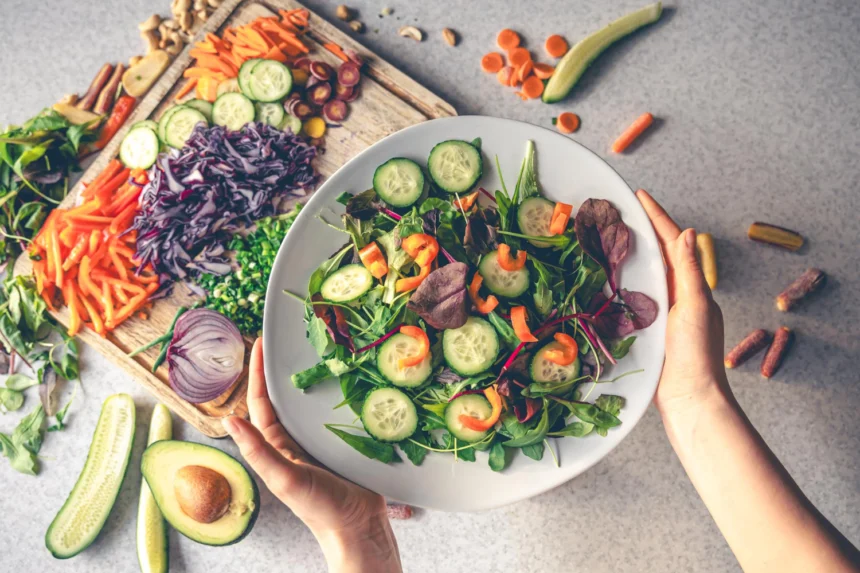Introduction: Understanding Vegan Meal Planning
Vegan meal planning is not only about choosing what to eat but also about ensuring a well-balanced diet that meets your nutritional needs. Whether you’re a seasoned vegan or just starting on your plant-based journey, effective meal planning can make a significant difference in your overall health and lifestyle.
Benefits of Vegan Meal Planning
One of the primary benefits of vegan meal planning is its positive impact on health. By focusing on whole plant foods, you can lower your risk of various chronic diseases such as heart disease, diabetes, and certain cancers. Additionally, vegan meal planning reduces your carbon footprint and helps conserve water and other resources, making it an environmentally friendly choice. Moreover, planning your meals in advance can save you time and money by minimizing food waste and unnecessary spending.
Setting Up Your Vegan Meal Plan
Before diving into meal planning, it’s essential to assess your nutritional needs. Make sure your meals include a variety of fruits, vegetables, whole grains, legumes, nuts, and seeds to ensure you’re getting all the essential nutrients. Planning balanced meals ensures that you’re meeting your protein, carbohydrate, fat, vitamin, and mineral requirements. When creating your meal plan, consider factors like portion sizes, cooking methods, and flavor combinations to keep your meals interesting and satisfying. Additionally, make a shopping list based on your meal plan to avoid impulse purchases and unnecessary trips to the grocery store.
Sample Vegan Meal Plan for the Week
Here’s a sample vegan meal plan to help you get started:
Monday:
- Breakfast: Overnight oats with almond milk, chia seeds, and fresh berries
- Lunch: Quinoa salad with roasted vegetables and a tahini dressing
- Dinner: Lentil curry with brown rice and steamed broccoli
Tuesday:
- Breakfast: Avocado toast with whole-grain bread and sliced tomatoes
- Lunch: Chickpea salad wrap with hummus and mixed greens
- Dinner: Stir-fried tofu with bell peppers, snap peas, and quinoa
Wednesday:
- Breakfast: Smoothie bowl with spinach, banana, mango, and hemp seeds
- Lunch: Sweet potato and black bean tacos with avocado and salsa
- Dinner: Spaghetti with marinara sauce and a side of garlic bread
Thursday:
- Breakfast: Vegan pancakes with maple syrup and mixed fruit
- Lunch: Mediterranean quinoa salad with olives, cucumbers, and lemon-tahini dressing
- Dinner: Vegetable stir-fry with tofu and brown rice
Friday:
- Breakfast: Breakfast burrito with scrambled tofu, black beans, and salsa
- Lunch: Falafel wrap with hummus, tabbouleh, and lettuce
- Dinner: Vegan pizza with whole-wheat crust and assorted vegetables
Saturday:
- Breakfast: Tofu scramble with spinach, mushrooms, and whole-grain toast
- Lunch: Buddha bowl with quinoa, roasted vegetables, avocado, and tahini sauce
- Dinner: Black bean and sweet potato chili with cornbread
Sunday:
- Breakfast: Vegan French toast with fresh fruit and maple syrup
- Lunch: Vegan sushi rolls with avocado, cucumber, and carrot
- Dinner: Stuffed bell peppers with quinoa, black beans, and salsa
Recipe Ideas for Vegan Meals
- Breakfast Options: Smoothie bowls, overnight oats, tofu scrambles, vegan pancakes, avocado toast
- Lunch Ideas: Salads, wraps, sandwiches, buddha bowls, grain bowls
- Dinner Recipes: Curries, stir-fries, pasta dishes, grain-based dishes, soups, stews
Tips for Successful Vegan Meal Planning
Batch cooking and meal prep are your best friends when it comes to vegan meal planning. Dedicate a day each week to prepare large batches of grains, beans, vegetables, and sauces that you can mix and match throughout the week. Invest in quality meal prep containers to store your meals safely and efficiently. Additionally, be flexible and adaptable with your meal plan, allowing room for improvisation and creativity.
Addressing Common Vegan Dietary Concerns
Despite the misconceptions, it’s entirely possible to meet all your nutritional needs on a vegan diet. Plant-based sources of protein include tofu, tempeh, lentils, beans, quinoa, and nuts. To ensure an adequate intake of iron and vitamin B12, include foods like fortified cereals, nutritional yeast, leafy greens, and fortified plant milks in your diet. Incorporating foods rich in omega-3 fatty acids such as flaxseeds, chia seeds, walnuts, and hemp seeds can help support brain and heart health.
Staying Motivated and Inspired
Joining vegan communities online or in-person can provide support, inspiration, and valuable resources for your vegan journey. Experiment with new ingredients and recipes to keep your meals exciting and flavorful. Remember that transitioning to a vegan lifestyle is a journey, and it’s okay to take it one step at a time.
Conclusion
Effective vegan meal planning can simplify your life, improve your health, and contribute to a more sustainable future. By following these tips and sample meal plans, you can enjoy delicious and nutritious vegan meals throughout the week.
FAQs
How can I ensure I’m getting enough protein on a vegan diet?
Incorporate a variety of plant-based protein sources such as beans, lentils, tofu, tempeh, quinoa, and nuts into your meals.
Are there any vegan alternatives for dairy products?
Yes, there are plenty of dairy-free alternatives available, including almond milk, soy milk, coconut yogurt, and cashew cheese.
What are some quick and easy vegan meal ideas for busy days?
Try making a simple stir-fry with tofu and vegetables, or whip up a hearty salad with mixed greens, beans, and avocado.
Can children follow a vegan meal plan safely?
Yes, with proper planning and attention to nutrition, children can thrive on a well-balanced vegan diet. Consult with a pediatrician or registered dietitian for personalized advice.
How do I handle social situations and dining out as a vegan?
Look for vegan-friendly restaurants or offer to bring a vegan dish to social gatherings. Don’t be afraid to ask questions or request modifications to accommodate your dietary preferences.


